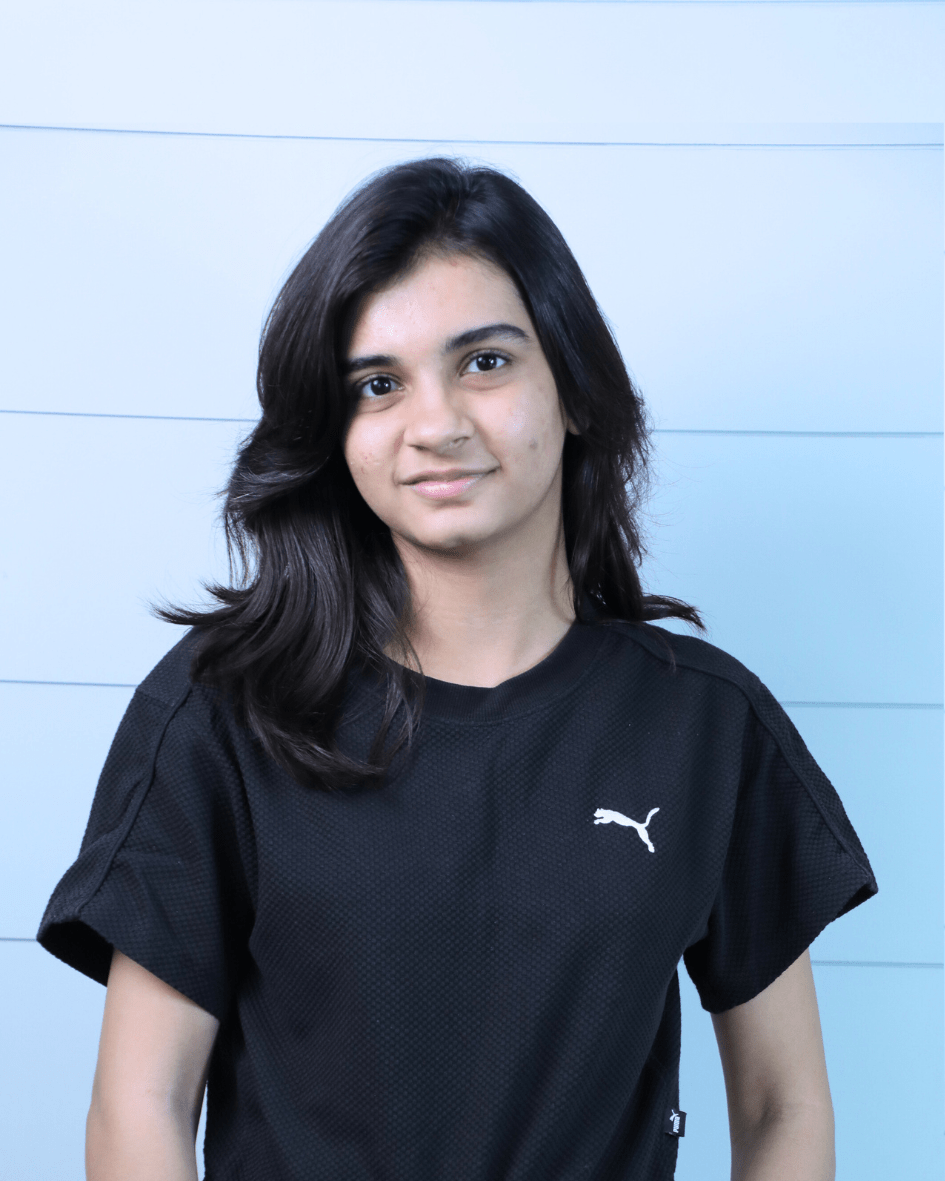
Innovating at the Convergence of Biosignals, Behaviour, and Biomedical Systems
Bio
Abhijeet Satani is an award-winning neuroscientist, inventor, and educator specialising in brain-computer interfaces (BCI) and cognitive neuroscience. He is the creator of the Cognitively Operated System (COS)—a patented BCI platform that bridges the gap between neural activity and machine control, with applications in assistive technology, rehabilitation, and human–AI integration.
His BCI innovations have been integrated into live neurosurgical procedures, including deep brain stimulation (DBS) surgeries for addiction treatment, hand transplant surgeries, and are currently being used in open brain surgeries, demonstrating the expanding role of neurotechnology in precision medicine and advanced surgical care.
A passionate advocate for science education, Abhijeet has authored two widely used academic guides—A Simple Approach to Neuroscience and How to Write a Research Paper—designed to make complex scientific concepts accessible to students, researchers, and professionals. His educational initiatives have reached thousands across the world through keynotes, workshops, and digital outreach. Known for blending cutting-edge research with relatable storytelling, Abhijeet speaks on topics including neurotechnology, the future of human–machine collaboration, surgical applications of BCI, and transforming STEM education for the next generation.
Research Topic
The SRC is dedicated to advancing technological innovation through interdisciplinary research paradigms that elucidate the fundamental relationships between neural mechanisms and behavioral phenotypes in both physiological and pathological states, particularly those manifesting as neurological pathologies. Our overarching mission centers on developing novel therapeutic interventions for neurological conditions that ameliorate patient suffering while circumventing the adverse sequelae inherent in current pharmacological approaches.
Contemporary neuroscientific inquiry has yielded substantial insights into neurotransmitter systems and neuromodulatory networks; however, a comprehensive theoretical framework elucidating the integrative mechanisms underlying these complex systems across multiple organizational levels—from molecular interactions to emergent behavioral outcomes—remains elusive. This conceptual gap is particularly pronounced in clinical neurology, where pharmacological agents targeting neuromodulatory pathways exhibit immediate biochemical efficacy yet demonstrate delayed therapeutic manifestation over weeks. Deciphering the intricate mechanisms of neuromodulation—the orchestrated regulation of brain-wide functional states through collective neuromodulatory signaling—represents a formidable scientific challenge necessitating revolutionary technological breakthroughs to transcend existing methodological constraints.
Our laboratory develops sophisticated biotechnological platforms enabling large-scale, real-time optical monitoring of neural network dynamics and neuromodulatory processes, thereby illuminating the operational principles governing neural circuit function. These previously unattainable measurements are fundamental to constructing dynamic computational models of neural signal propagation and addressing critical knowledge gaps in our understanding of the integrated coordination spanning molecular mechanisms, synaptic plasticity phenomena, network-level activities, and resultant behavioral expressions.
Furthermore, our technological innovations facilitate high-throughput pharmaceutical discovery methodologies for neurological disorders. We are engineering comprehensive screening platforms designed to evaluate novel therapeutic compounds for both efficacy and safety profiles, specifically targeting the elimination of deleterious side effects. Through these multifaceted approaches, we aspire to bridge the translational divide between fundamental scientific discovery and clinical application, ultimately revolutionising pharmaceutical development pipelines and expediting the emergence of superior therapeutic solutions for individuals affected by neurological diseases.
Current Projects
Project 1 – Cognitive Operated System - Neural Signal-Based Device Control
Our laboratory has pioneered a sophisticated neural interface paradigm that facilitates direct device manipulation through bioelectrical signal transduction, representing a seminal advancement in brain-computer interface methodologies. This integrated system architecture encompasses a hierarchical network of interconnected computational modules: a centralized processing unit, bidirectional communication infrastructure, and peripheral actuators that function synergistically to decode and execute neural imperatives.
The operational framework initiates through the generation of a primary carrier signal engineered to exhibit dynamic interaction properties with endogenous neural oscillations emanating from cortical regions. These neural emanations encapsulate encoded motor intentions, manifesting as complex spatiotemporal bioelectrical patterns that reflect the user's volitional commands. Upon convergence with these neural signatures, the carrier signal undergoes systematic modulation, yielding a secondary signal that embodies the transduced neural information.
Our sophisticated signal processing algorithms employ advanced computational methodologies to capture and analyze this modulated waveform, extracting salient features that preserve the integrity of the original neural instructions. Through comprehensive analytical frameworks, the system generates precise executable commands that faithfully represent the user's intended motor behaviors. These instructions are subsequently transmitted to target devices via proprietary communication protocols, enabling seamless operational control as dictated by neural intent.
This methodology establishes an unprecedented paradigm for direct neural-device interfacing, offering transformative applications across diverse clinical and assistive domains, from mobility augmentation technologies for individuals with motor impairments to advanced neuroprosthetic systems that respond intuitively to neural volition.
Project 2 – Advanced Neurosurgical Innovation - Real-Time Brain Activity Visualization
Our research consortium has developed groundbreaking brain-computer interface integration protocols for neurosurgical applications, fundamentally transforming operative procedures through real-time, three-dimensional visualization of neural dynamics during invasive interventions. This technological innovation represents a paradigmatic evolution in neurosurgical precision and patient safety optimization.
Our platform architecture captures and renders live neural activity patterns with exceptional temporal-spatial resolution, providing surgeons with continuous intraoperative monitoring capabilities throughout complex procedures. This real-time neural cartography substantially enhances surgical precision by enabling immediate identification of functionally critical anatomical regions, including eloquent cortical areas governing language processing, motor control, sensory integration, and higher-order cognitive functions, thereby mitigating iatrogenic damage to healthy neural tissue.
The system incorporates immediate feedback mechanisms that facilitate real-time surgical strategy modifications, ensuring personalized treatment optimization tailored to individual neuroanatomical configurations. For complex pathological conditions including refractory epilepsy, neoplastic lesions, and cerebrovascular malformations, this technology enables precise pathological localization while maintaining clear demarcation between healthy and compromised neural substrates.
Through seamless integration of real-time neural mapping protocols into open cranial surgical procedures, these innovations are revolutionizing traditionally high-risk neurosurgical interventions into safer, more efficacious therapeutic modalities. This advancement establishes new clinical standards for both patient care excellence and medical technological innovation.
Project 3 –Autism Spectrum Disorder - Recreational Brain-Computer Interface Programming
Our research group has developed an innovative recreational brain-computer interface programming methodology specifically tailored for children and adolescents with autism spectrum disorders, establishing novel paradigms for therapeutic engagement and developmental skill acquisition. While conventional BCI research has predominantly emphasized cognitive remediation and behavioral modification, the therapeutic potential of BCI applications within recreational frameworks has remained largely underexplored.
Our comprehensive longitudinal case study chronicles the therapeutic journey of an autistic adolescent with comorbid attention-deficit hyperactivity disorder participating in our specialized BCI programming protocol, documenting remarkable clinical outcomes that surpassed anticipated therapeutic benchmarks. Through systematic retrospective clinical data analysis, conducted under rigorous ethical oversight with appropriate guardian consent, we observed consistent demonstration of strong engagement preferences, with the participant actively seeking additional BCI session opportunities.
Quantitative assessment utilizing the Canadian Occupational Performance Measure revealed that performance indices achieved during BCI programming sessions significantly exceeded baseline measurements from conventional recreational activities, indicating superior therapeutic engagement and developmental skill acquisition. Clinical observations documented substantial improvements in social communication competencies and self-advocacy behaviors, suggesting that BCI-mediated interventions may effectively address core developmental challenges characteristic of autism spectrum conditions.
Our findings establish that BCI-based recreational programming constitutes a promising therapeutic modality for engaging autistic youth, facilitating concurrent social skill development and cognitive enhancement while potentially improving overall quality of life outcomes. This research provides foundational evidence for expanded BCI technology applications in autism intervention protocols.
Project 4 –Alternative Nervous System - Functional Electrical Stimulation for Neural Recovery
Our Alternative Nervous System initiative represents a revolutionary therapeutic approach to motor and sensory function restoration in individuals affected by central nervous system trauma or degenerative pathologies through sophisticated external modulation of peripheral neural pathways. This comprehensive therapeutic system utilizes targeted functional electrical stimulation protocols to activate both afferent and efferent neural circuits, establishing an integrated network of therapeutic intervention.
The ANS methodology employs strategic muscle stimulation through both direct motor unit activation and reflexive pathway engagement while simultaneously recruiting residual central nervous system functionality. This dual-mechanism approach provides substantial orthotic benefits to paralyzed musculature while simultaneously ameliorating both sensory and motor deficits. Therapeutic efficacy is optimized through systematic integration with functional task-specific training protocols during acute disability phases, maximizing neuroplastic recovery potential.
Our FES-based ANS operates through precisely calibrated electrical pulse sequences delivered via strategically positioned electrode arrays, generating controlled electromagnetic field patterns that activate peripheral neural pathways and propagate action potentials to both target musculature and central nervous system structures. This sophisticated stimulation paradigm effectively restores postural control mechanisms, enables rhythmic movement patterns including ambulatory and cycling functions, and facilitates complex manipulative and prehensile behaviors.
Beyond primary functional restoration, FES intervention significantly mitigates secondary pathophysiological complications commonly associated with paralysis, including cardiovascular deconditioning, muscular atrophy, osteoporotic changes, and articular contractures. This comprehensive therapeutic approach offers transformative rehabilitation solutions addressing both immediate functional restoration and long-term health preservation.
Project 5 –Astrocyte Modulation of Neural Circuit Function and Behaviour
Astrocytes, representing one of the most prevalent cellular populations within the central nervous system, have historically been characterised as predominantly passive supportive elements. However, contemporary investigations utilising advanced methodological approaches have elucidated critical roles for astrocytes in neural circuit assembly, functional regulation, and pathological processes. Despite these significant advances, the mechanisms through which astrocytes structurally and functionally integrate with neuronal networks to modulate circuit dynamics and behavioural outcomes remain largely enigmatic. To develop a comprehensive mechanistic understanding of astrocytic contributions to neural circuit operations, computational processes, and behavioural manifestations, we have established collaborative partnerships within the U19 Astrocyte-Team BRAIN Circuit Program consortium.
Astrocytic functional characterisation has predominantly relied upon monitoring behaviour-associated intracellular calcium dynamics utilising genetically encoded calcium indicators such as GCaMPs. However, calcium imaging methodologies alone prove insufficient to reveal astrocytes' integral and modulatory contributions to neural circuit function. We are developing innovative experimental paradigms to identify molecular, cellular, and circuit-level components of astrocyte-neuron interactions that contribute to behavioural outputs. These biotechnological advances will enable the determination of how astrocytes integrate diverse neuronal signals during behavioural performance and how astrocytes transduce this information into functional outputs that modulate neural network activity.
Our research emphasises understanding bidirectional communication mechanisms between astrocytes and neurons, investigating how astrocytes process and integrate synaptic information to influence network dynamics. We employ sophisticated molecular tools and advanced imaging techniques to monitor astrocytic responses during complex behavioural paradigms, elucidating their contributions to circuit computation and behavioural expression. Through these investigations, we endeavour to uncover fundamental principles governing astrocyte-neuron interactions and their contributions to both physiological brain function and neurological pathologies.
Project 6 –Development of SRC’s Biohybrid Neural Interface Platform
SRC is actively advancing a groundbreaking biohybrid neural interface platform that integrates living neuronal networks cultured on multi-electrode array (MEA) systems with sophisticated real-time computational control. This ongoing project aims to move beyond traditional neural recording by enabling dynamic, closed-loop communication between biological neurons and digital systems, creating an adaptive neural network capable of learning and interacting with external devices.
Our innovative approach incorporates real-time neuromodulation combined with custom machine learning algorithms designed to shape neuronal plasticity and functional behaviour in vitro. This allows cultured neural circuits not only to respond passively but to actively adapt and reorganise based on environmental feedback, simulating fundamental cognitive processes.
The platform further distinguishes itself by employing multi-modal stimulation techniques, integrating electrical and biochemical inputs to finely tune neural activity and circuit dynamics. These novel capabilities offer new insights into neural coding and plasticity, with potential applications in neuroprosthetics, rehabilitation, and brain-inspired computing.
SRC’s interdisciplinary team continues to develop and optimize this modular, scalable system—pioneering a new class of adaptive neurotechnologies that bridge biological intelligence and artificial systems. This project stands at the cutting edge of neuroscience innovation, with implications for personalized neuromodulation therapies and hybrid bio-artificial intelligence.
News


Neuroscientist Abhijeet Satani unveils Cognitively Operated System in Ahmedabad

Computer whisperer opens new frontiers

Emergence of the Brain-Computer interface: unlocking a new frontier in healthcare and beyond

When the Dentist’s Chair Triggers the Brain: What EEG Reveals About Kids and Dental Anxiety

When Faces Fade: A New Approach to Detecting Alzheimer’s Early

BiASE: A Revolutionary Deep Learning Model for ECG Arrhythmia Detection
Open positions
Thank you for your interest in employment opportunities with the Satani Research Centre in our cutting-edge neuroscience research facility.
To be considered for any of our open positions, please submit your materials using the links below. Local residents are preferred for our positions.
Department
Position
Satani Research Centre
Satani Research Centre
Lab Members
Core Research Team
Research Team & Scientists
Under the guidance of Chief Science Officer Abhijeet Satani, our dedicated team of researchers contributes to the ongoing validation and development of new Neurological methodologies:
Senior Research Scientists :
- Shelley Watts (Bruce)
- Debbie Cotterell
- Denise Saunders
- Nadine Brewster
- Becky Young
- Sarah June
- Zita Stanley
- Louise Doyle
- Laura Fielding Lawlor
- Kelly Lewis
- Marte Leine Stinterud
- Donna SS
- Rachel Rocco
- Julia Cox
- Tracey-Louise Wilson
- Emma Barwick
- Vicki Turner (Mcbride)
- Denise Wilson
- Dawn Tracey Monks
- Ulenka Keys
- Andree Sims
- Emma Bennett
- Louise Riley
- Denise Shahzuz
- Daisy Roberts
Patent
-
1.20160327918 Cognitively operated system US - 10.11.2016, Int.Class G05B 13/02, Appl.No 15110858, Inventor- Abhijeet R. Satani
Patent Granted
The present subject matter provides: a server and a method thereof; a communication device and a method thereof; and a controlled device and a method thereof. The present subject matter provides capturing of modification caused by the neural signals on a first signal. The present subject matter provides generation and broadcasting of the first signal which interacts with the neural signal. The neural signals correspond to instructions to operate a controlled device. The interaction between the first signal and neural signal causes modification of some characteristics of the first signal, resulting in a second signal. The second signal is than captured and analyzed for generating a command corresponding to the second signal. The command is reflective of the instructions to operate the controlled device and the subject matter provides causing the controlled device to operate according to the
-
.WO/2015/104647 COGNITIVELY OPERATED SYSTEM WO - 16.07.2015, Int.Class H04L 29/10 Appl.No PCT/IB2015/050007, Inventor- SATANI, Abhijeet R.
Patent Granted
The present subject matter provides: a server and a method thereof; a communication device and a method thereof; and a controlled device and a method thereof. The present subject matter provides capturing of modification caused by the neural signals on a first signal. The present subject matter provides generation and broadcasting of the first signal which interacts with the neural signal. The neural signals correspond to instructions to operate a controlled device. The interaction between the first signal and neural signal causes modification of some characteristics of the first signal, resulting in a second signal. The second signal is than captured and analyzed for generating a command corresponding to the second signal. The command is reflective of the instructions to operate the controlled device and the subject matter provides causing the controlled device to operate according to the command.
-
3095231 COGNITIVELY OPERATED SYSTEM EP - 23.11.2016 Int.Class G06F 3/01 Appl.No 15734965 Inventor- SATANI ABHIJEET R
Patent Granted
The present subject matter provides: a server and a method thereof; a communication device and a method thereof; and a controlled device and a method thereof. The present subject matter provides capturing of modification caused by the neural signals on a first signal. The present subject matter provides generation and broadcasting of the first signal which interacts with the neural signal. The neural signals correspond to instructions to operate a controlled device. The interaction between the first signal and neural signal causes modification of some characteristics of the first signal, resulting in a second signal. The second signal is than captured and analyzed for generating a command corresponding to the second signal. The command is reflective of the instructions to operate the controlled device and the subject matter provides causing the controlled device to operate according to the command.
Preprints
-
Impact of Preservation Temperature on Vascular Endothelial and Smooth Muscle Integrity.
Satani, A. (2025). Impact of Preservation Temperature on Vascular Endothelial and Smooth Muscle Integrity. bioRxiv: The Preprint Server for Biology, 2025. Satani Research Centre.
-
Evolving Strategies in Donor Heart Preservation: From Static Cold Storage to Machine Perfusion and Pharmacological Repair.
Satani, A. (2025). Evolving Strategies in Donor Heart Preservation: From Static Cold Storage to Machine Perfusion and Pharmacological Repair. bioRxiv: The Preprint Server for Biology, 2025. Satani Research Centre.
-
Harnessing Belief Coding® to Address Modern Mental Disorders: A Neuropsychological Therapeutic Model.
Satani, A., & Cunningham, J. (2025). Harnessing Belief Coding® to Address Modern Mental Disorders: A Neuropsychological Therapeutic Model. bioRxiv: The Preprint Server for Biology, 2025.
-
The Application of Belief Coding® in Addressing Menopausal Symptoms: A Novel Therapeutic Approach.
Cox, J., Wilson, T. L., Barwick, E., & Turner, V. (2025). The Application of Belief Coding® in Addressing Menopausal Symptoms: A Novel Therapeutic Approach. bioRxiv: The Preprint Server for Biology, 2025.
Recent Publications
-
EEG-Based Evidence for Belief Coding Therapy in Treating Mental Disorders: A Cross-Sectional Interventional Study.
Satani, A. (2025). EEG-Based Evidence for Belief Coding Therapy in Treating Anxiety. Cureus, Published August 27, 2025. https://pmc.ncbi.nlm.nih.gov/articles/PMC12490638
-
Modern Day High: The Neurocognitive Impact of Social Media Usage.
Satani, A., Satani, K. K., Barodia, P., & Joshi, H. (2025). Modern Day High: The Neurocognitive Impact of Social Media Usage. Cureus, Published July 8, 2025. https://doi.org/10.7759/cureus.87496
-
Neural correlates of Belief Coding: an EEG study on neurophysiological changes in a novel therapeutic approach.
Satani, A., & Cunningham, J. (2025). Neural correlates of Belief Coding: an EEG study on neurophysiological changes in a novel therapeutic approach. Neuroscience Research Journal.
-
Innovative Approaches in Therapeutic Practices: The Framework of Belief Coding®.
Cunningham, J. (2025). Innovative Approaches in Therapeutic Practices: The Framework of Belief Coding®. International Journal of Scientific Research, Vol. 14, pp. 808-812.
-
BiASE: Bidirectional Arrhythmia Sequence extractor for enhanced electrocardiogram-based classification.
Satani, A., Barodia, P., & Satani, B. (2024). BiASE: Bidirectional Arrhythmia Sequence extractor for enhanced electrocardiogram-based classification. Medical Research Archives, Volume 12 Issue 7.
-
Innovative Approach: Facial Recognition and Event-Related Potential for Early Detection of Alzheimer's Disease.
Satani, A., Kaiser, D., & Barodia, P. (2024). Innovative Approach: Facial Recognition and Event-Related Potential for Early Detection of Alzheimer's Disease. Medical Research Archives, Volume 13 Issue 5, Pages: 1156-1163.
-
Effects of Spirituality on Neural Pathway in the Brain: An EEG study of Sanskrit mantra vocalization.
Satani, A., Barodia, P., & Satani, B. (2024). Effects of Spirituality on Neural Pathway in the Brain: An EEG study of Sanskrit mantra vocalization. Medical Research Archives, Volume 13 Issue 2, Pages: 1-5.
-
Electroencephalography-based Assessment of Neural Responses in Typical and Atypical Children during Dental Treatment.
Satani, A., Bafna, Y., Fernandes, S., Barodia, P., Patel, D., Joshi, H., & Parmar, D. (2025). Electroencephalography-based Assessment of Neural Responses in Typical and Atypical Children during Dental Treatment. Medical Research Archives, Volume 8 Issue 3, Pages: 9-14.








